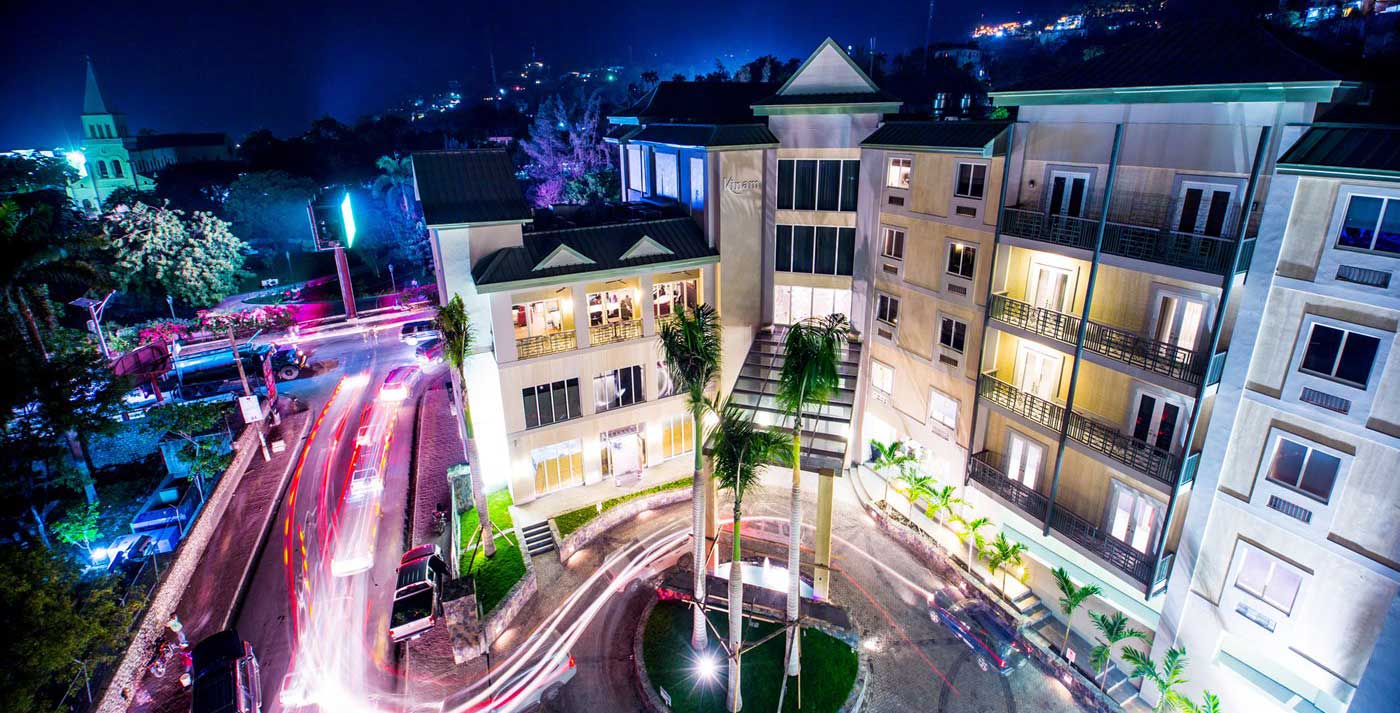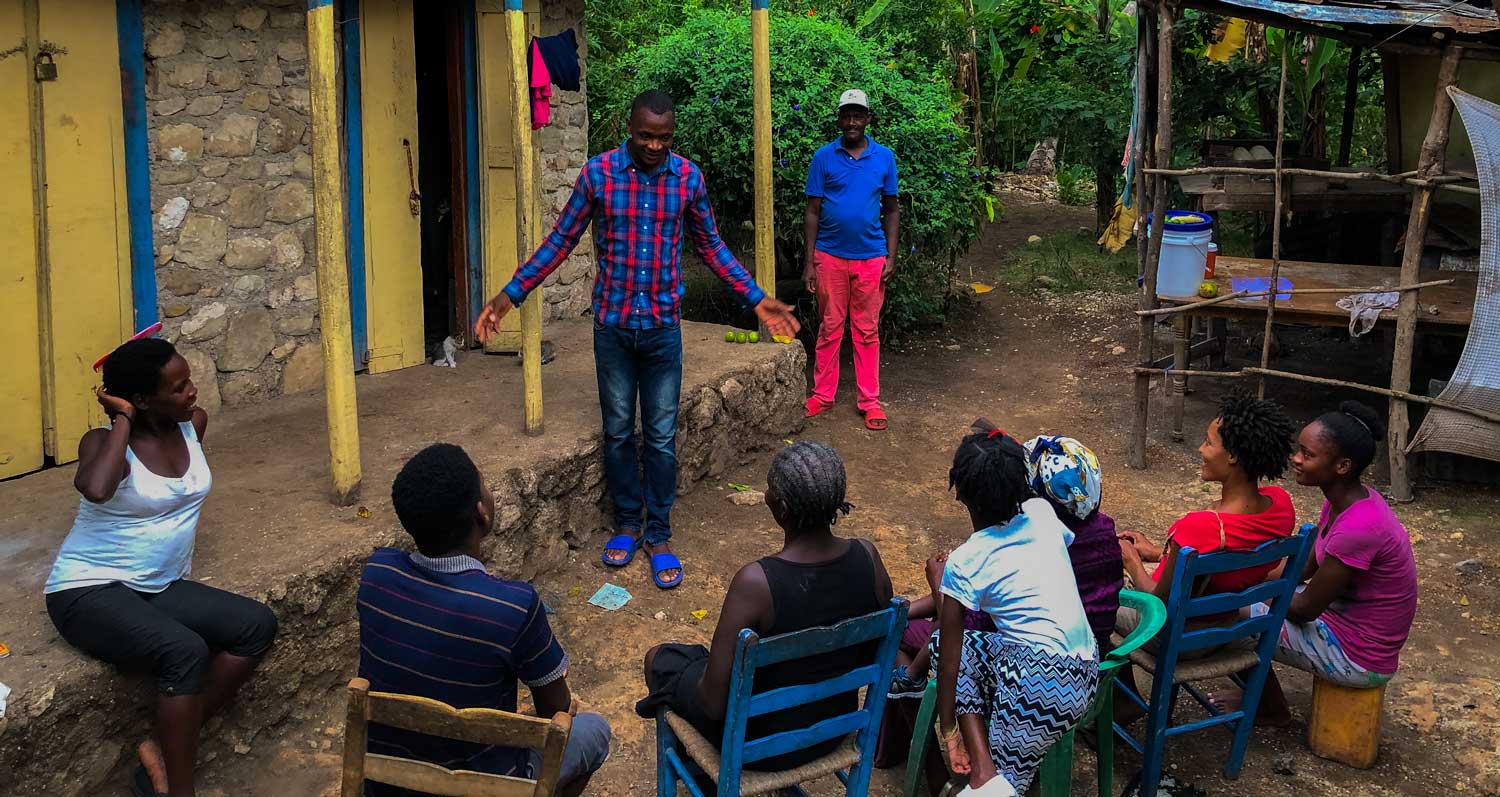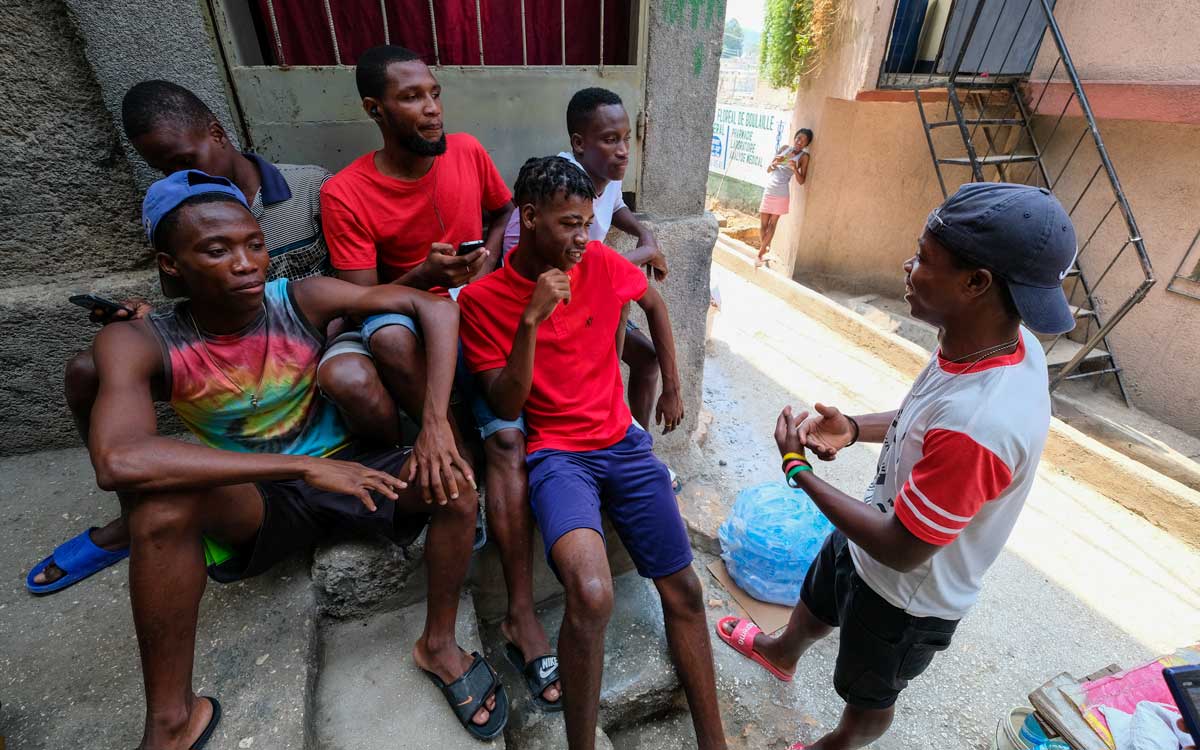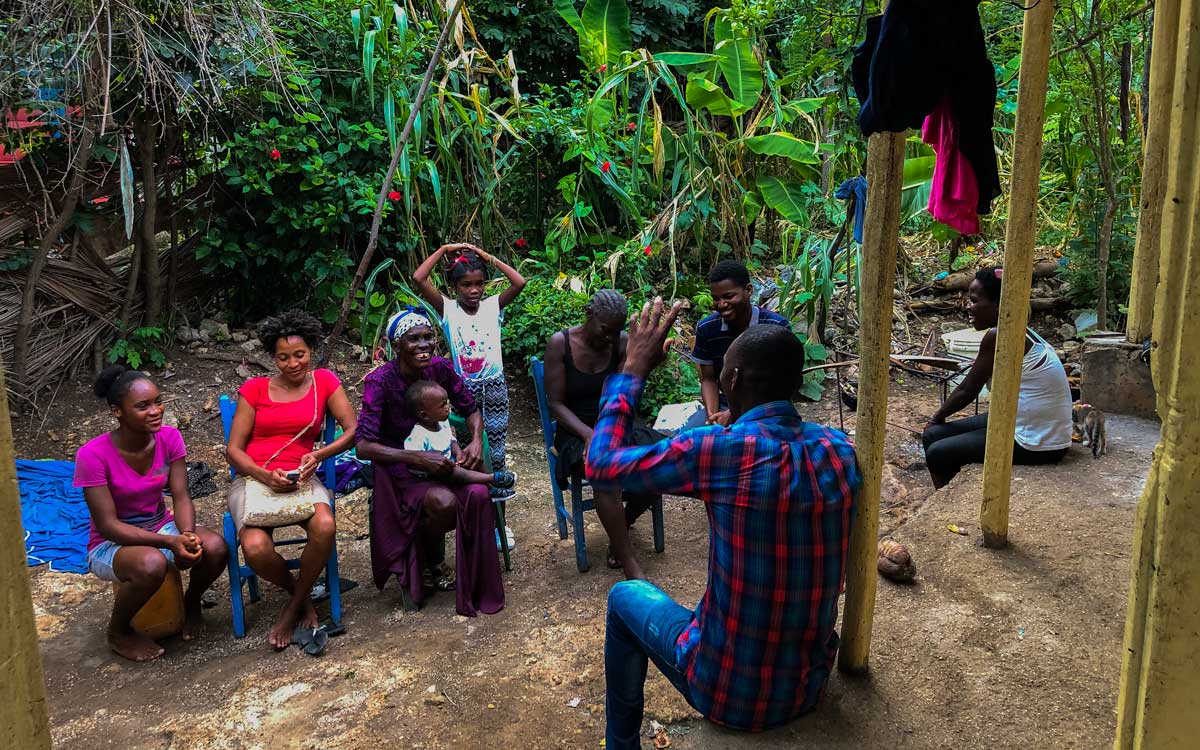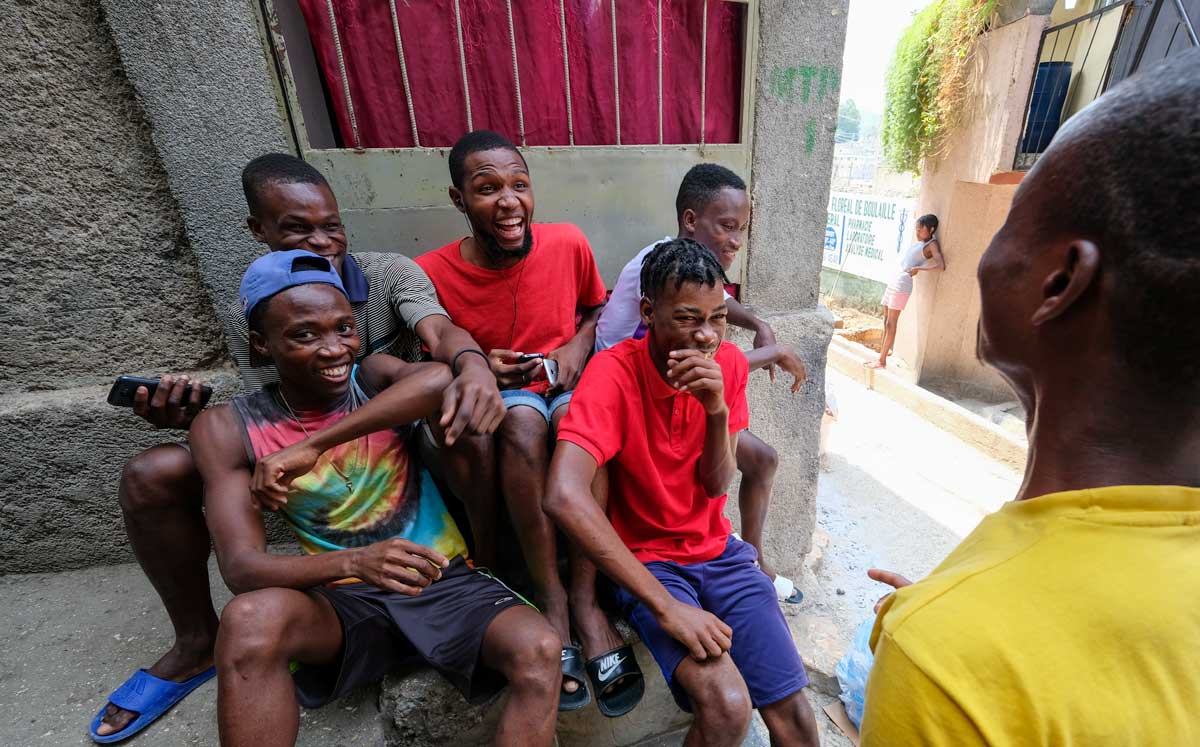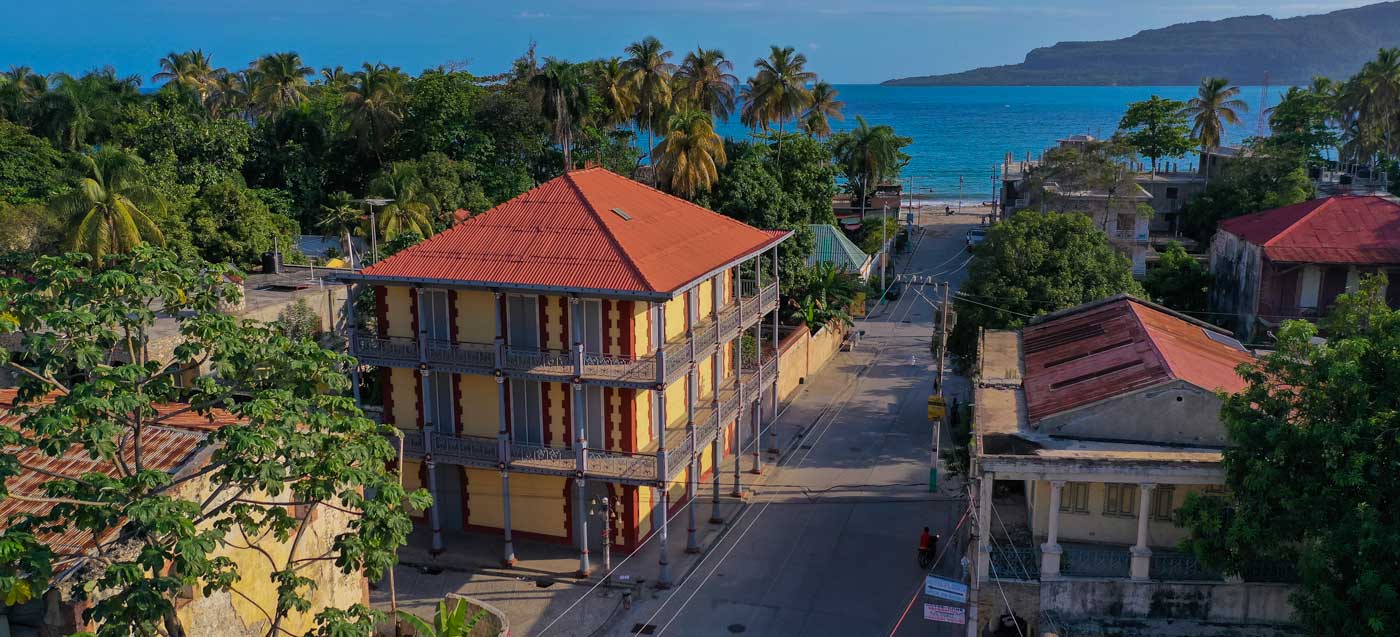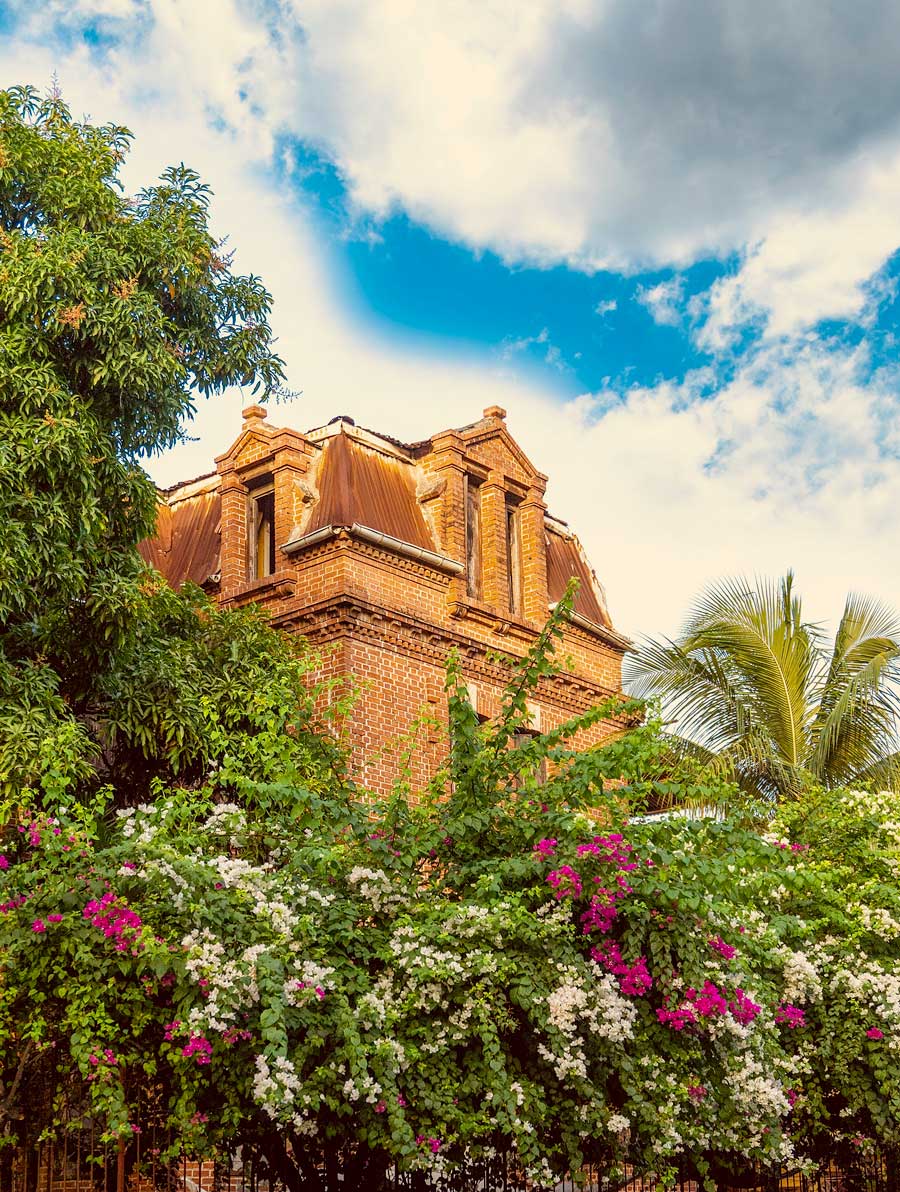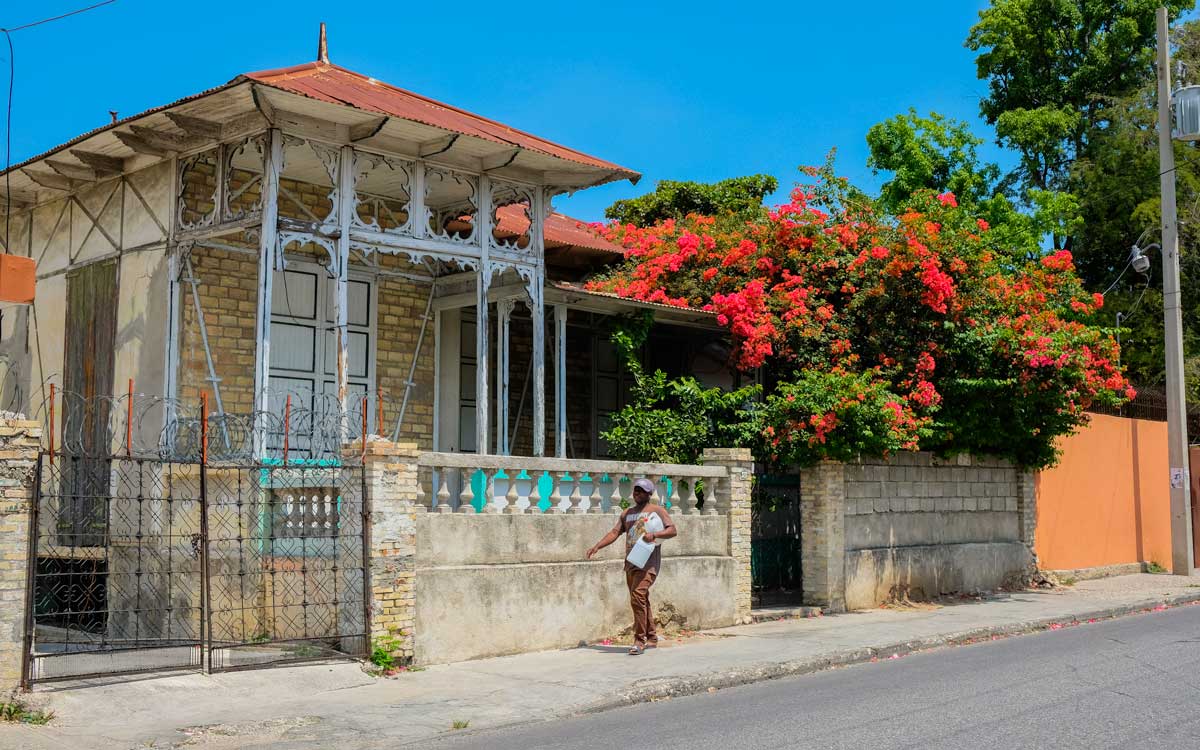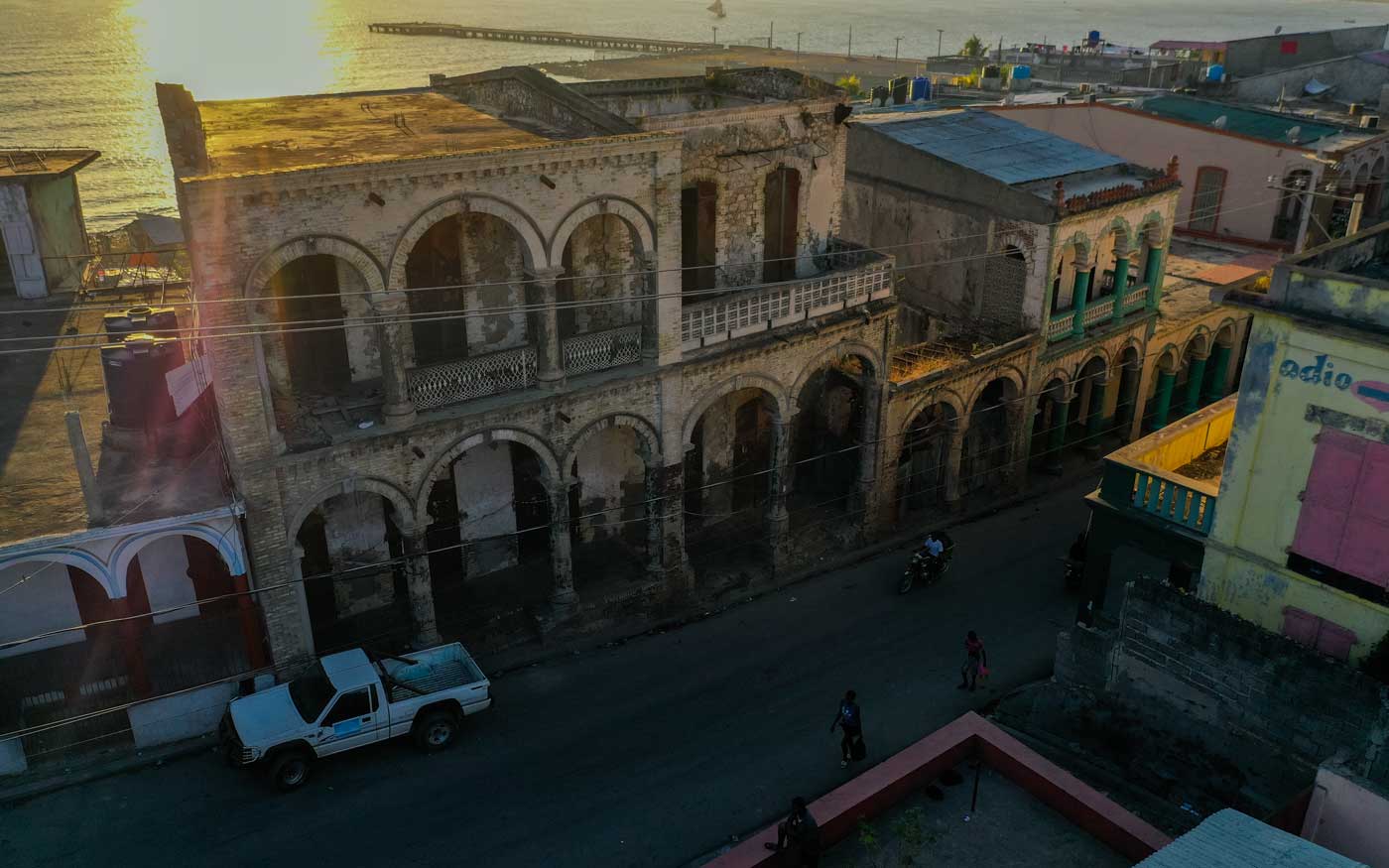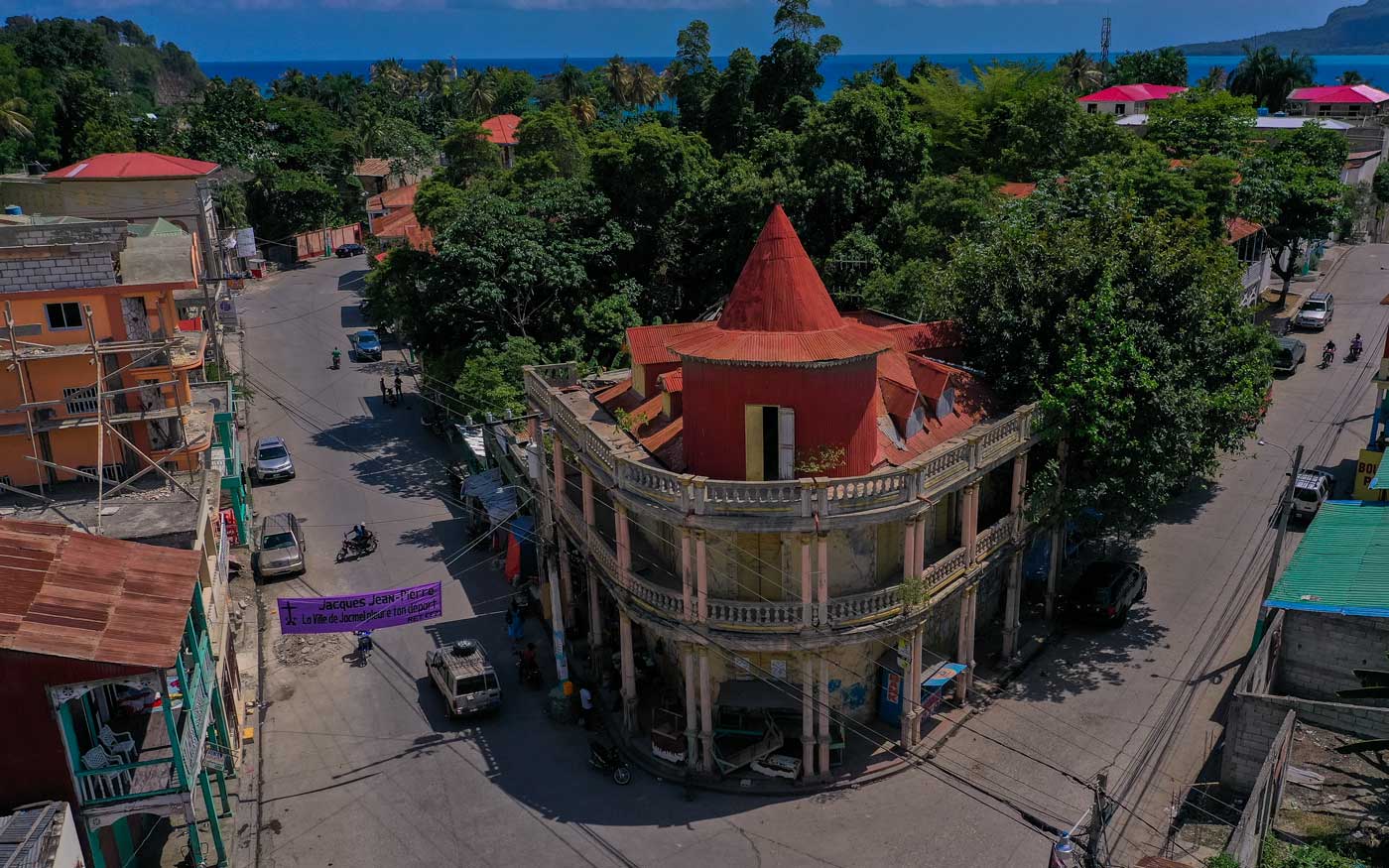
Photo: Anton Lau
Hotel Villa Thérèse
Experience the luxury of a tropical staycation right in the middle of Pétion-Ville when you stay at Hotel Villa Thérèse.
First Impressions
At Hotel Villa Thérèse, the experience of a relaxing, tropical vacation comes true. Tucked away in the busy city of Pétion-Ville, this boutique hotel provides a well-needed oasis of peace and quiet. The homely, cream building seems to be tucked between tufts of trees; greenery climbs on and over some of the walls. The sound of the pool’s waterfalls sings a welcome song that is amplified from the reception hall to visitors’ personal sanctuary rooms.
Rooms
A quaint boutique hotel, Hotel Villa Thérèse houses a total of 23 units. Visitors have the choice between standard rooms, suites, or an apartment. Featuring wooden ceilings, all of the rooms are equipped with air conditioning and a private balcony overlooking the hotel’s private gardens. Two of its suites benefit from a view of the nearby mountains, and beautiful sunsets, every evening.
What’s for breakfast?
Hotel Villa Thérèse offers the standard continental breakfast, with options such as eggs, fresh local fruit, and baked goods. While this may be a fine option, most visitors tend to gravitate towards the hotel’s menu of local breakfast options like spaghetti, polenta and greens, and prepared liver.
How about lunch and dinner?
When lunch or dinner time rolls around, visitors can choose to eat from two different menus. Regulars rave about Hotel Villa Thérèse’s cheeseburger and lamb chop. The Lakay platter, an assortment of pork, goat, conch, fried plantain, and cassava fritters, is the absolute best foray into Haitian cuisine. If you have the chance to spend a Sunday on the island, you will want to get acquainted with their spit-roast pork.
Is there a bar?
The hotel also houses a small bar that seats 12, with a large wooden terrace overlooking the cascading pool. Their specialty is the Villa Thérèse cocktail, which is rum and fruit-based. It’s very difficult to have just one!
Activities and amenities
Hotel Villa Thérèse is a partner of GG Spa, who provides visitors and patrons of the hotel with massage services either in one of the rooms, or poolside. The hotel offers free WiFi to its clients.
Within a short walk you can find…
There are many restaurants not too far away from the hotel, as well as art galleries — less than 5 minutes away! Place Boyer and Place Saint-Pierre are also less than 5 minutes away. Should visitors be looking for some fresh air, the Boutilier observatory is 20 minutes away.
Need to know (before you go)
The hotel offers a paid transportation service with a personal driver, in an armored car. Laundry is also available, with clothing returned the very same day. Unfortunately, the hotel does not allow pets.
Getting there
For directions and bookings visit Hotel Villa Thérèse on Hotels.com
Looking for some cool things to do?

Paradise for your inbox
Your monthly ticket to Haiti awaits! Get first-hand travel tips, the latest news, and inspiring stories delivered straight to your inbox—no spam, just paradise.


